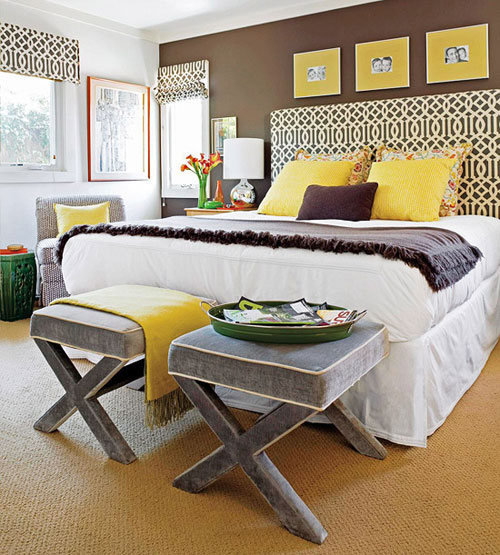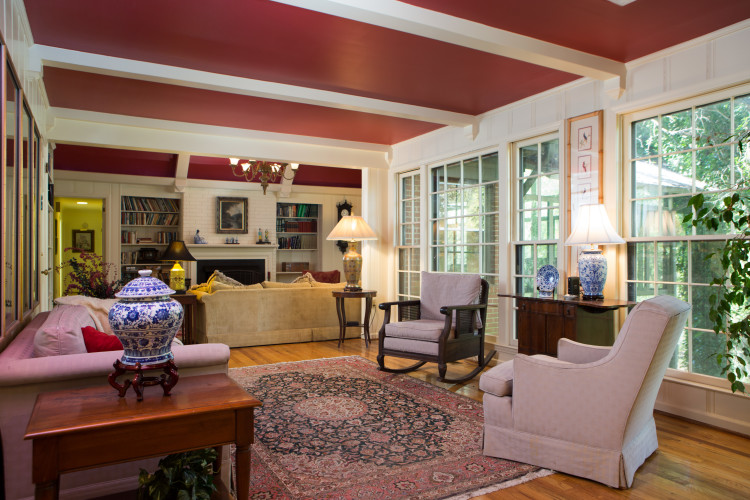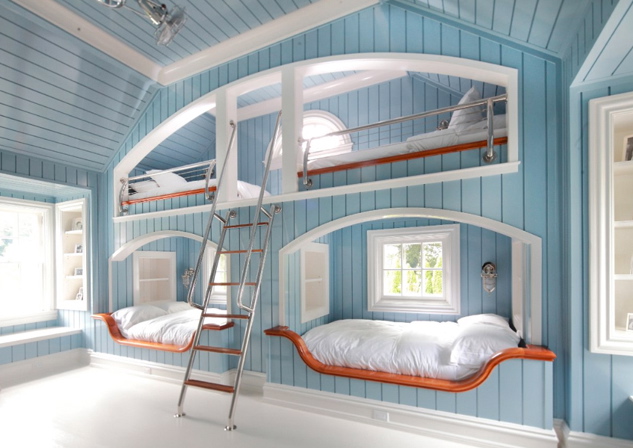Color in Interior Spaces - Placement and Size
"All colors will agree in the dark." ~Francis Bacon
Color Placement
Color placement affects the way that we see color. In the 18th century, a French chemist and carpet weaver named Michel Eugène Chevreul observed how individual colors changed when combined with other colors. He noticed that when bright colors were woven side by side, they no longer looked bright but instead appeared gray. This information was crucial to the Impressionist painters, such as Monet and Serat. Chevreul observed that the same color can be made to appear light if surrounded by a dark color, or darker if surrounded by a light color. Let's take red for example. Notice how your eye sees red in the illustration below.
Notice a difference? The red appears much more brilliant when place against black and blue-green and much duller when placed against white or orange.
The small purple rectangles in the center below are actually the same color. However, the small purple rectangle on the left almost appears to have a tinge of red. This shows how the same color can be read differently depending on color placement.
OK, so what does that have to do with interior design? For one thing, we rarely see color by itself and second, color changes with its surroundings. So when choosing colors for a space we need to take into consideration surrounding colors meaning the colors from adjoining rooms, even the colors from the outside.
Size of the Space
Keep in mind these simple principles governing color and the size of the space.
Add a pop of color in a small space for interest
Use horizontal stripes in a medium tone color to add length to a space
A dark ceiling adds interests while bringing the ceiling down visually
Make a room feel warm and cozy with warm colors
Cool colors expand rooms
Ever wonder if colors could affect the way you feel? Be sure to follow my blog or subscribe to get more decorating advice.
[wysija_form id="1"]
Thanks for stopping by...
Until next time,










